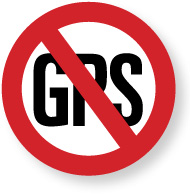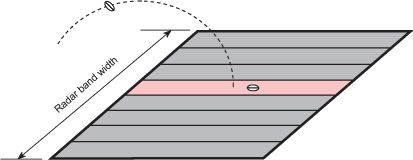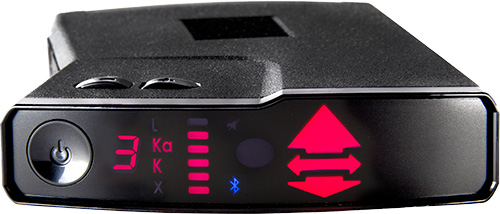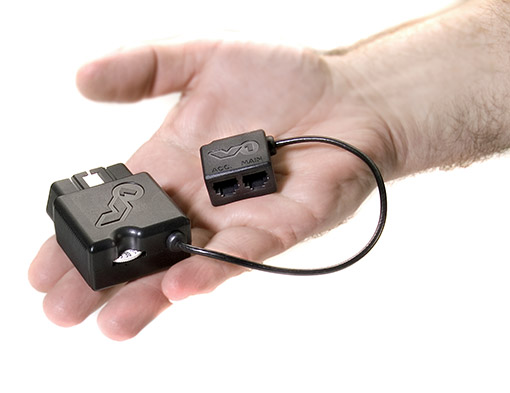Mike on GPS

That’s Murphy’s Law as it was hammered into us in engineering school. The prof’s point: if your design allows even the slimmest chance of failure, you’ll get failures.
 That’s why we don’t use GPS to block unwanted signals. First, the ever-expanding cacophony of K-band falses today are moving around in new cars—generated by the blind-spot warning systems now becoming standard equipment. GPS can’t block these alarms because they’re moving. GPS works only on stationary signals. You might say GPS-based signal blocking is designed for yesterday’s problem.
That’s why we don’t use GPS to block unwanted signals. First, the ever-expanding cacophony of K-band falses today are moving around in new cars—generated by the blind-spot warning systems now becoming standard equipment. GPS can’t block these alarms because they’re moving. GPS works only on stationary signals. You might say GPS-based signal blocking is designed for yesterday’s problem.
More troubling still, GPS blocking has a fatal flaw on stationary alarms. Here’s why: In yesterday’s world, there was no technical difference between the signals we call “false alarms” and those of real radar. So a location-based blocking system blocks real radar just as eagerly as it blocks unwanted alerts.
How GPS blocking works
Since the signals have always been indistinguishable, the GPS method uses a simple work-around. It divides the broad radar band into sub-bands. Think of a board floor. Each board represents a sub-band. Imagine dropping a coffee bean on that floor, the equivalent of a microwave signal somewhere in the wide radar band. The idea behind GPS blocking is this: the detector knows the car’s location when it picks up the signal, and it knows what sub-band the signal fell into so, by blocking that sub-band whenever the car is in the marked location, the unwanted signal should be gone forever.
Feeling lucky?
But the simple work-around turns out to be too simple. If you drop a second coffee bean on the floor, it might fall on the same board. With a GPS detector, you are betting that any radar operating near a blocked alarm will be in a different sub-band. But remember Murphy’s Law. If it’s possible for radar to be on the same sub-band, it will be there some of the time.

Escort gets beaned: What’s the chance of two dropped coffee beans falling on the same floor board, or traffic radar falling into the same sub-band as a blocked false alarm? According to Murphy’s Law, if it can happen, it will. And, in fact, it does happen as you can see at https://www.youtube.com/watch?v=Dxy7gGG-JlI. This video, by an independent group of detector testers who call themselves the Guys Of Lidar, shows an Escort 9500i locking out a K-band radar when a false at a nearby Shell station is blocked. When the false is unblocked, the radar gun is detected normally.
Murphy doubles down
Yesterday’s false-alarm problem was mostly caused by the transmitters used to open store doors. They are cheap, non-precision devices good enough to “see” something near the door, but they aren’t engineered to keep a stable frequency. So the frequency drifts as temperatures change, which means they can move out of their GPS sub-band. When that happens, they’re false alarms again.

Two sub-bands blocked — Now the chance of a Murphy’s law failure doubles.
When GPS-detector user goes through a location he’s already blocked, and the unwanted alarm is back, he blocks it again. But now he’s got two adjacent subbands blocked and the chance of a Murphy’s Law failure doubles.
Finally, a better idea
Instead of GPS, V1 Gen2 packs a one-two punch against false alarms:
Punch One: A new and sophisticated computer algorithm we call K-Verifier recognizes most mobile K-band false alarms and excludes them, yet never blocks real radar.
Punch Two: An optional plug-in module, SAVVY, has a thumb knob marked in mph. Alarms encountered below your speed setting will be quieted automatically to V1’s muted volume after an initial report. Imagine, those nagging squawks in the big-box store lot just fade away.

Every new V1 Gen2 has K-Verifier
Punch One is built into all new V1s. K-Verifier avoids the Murphy’s Law failures of location-based signal blocking, first, by focusing on moving K-band signals only, using new technology to recognize most of the false alarms, then silencing only the ones it knows to be false.
Punch Two, the SAVVY module, is easy to install. It plugs directly into the onboard diagnostic port on any car built since January, 1996. This port provides power (12 volts) and streams vehicle speed data. You plug V1’s power cord into SAVVY and you’re ready to go.
 SAVVY can’t possibly run afoul of Murphy’s Law because, instead of blocking alarms, some of which might be radar, it automatically turns down the warning volume of all alarms at speeds below your set point. In metro driving and particularly in neighborhoods with big-box stores, SAVVY drops the sound to a non-distracting level while preserving the Flow of Information from V1’s arrows and bogey counter.
SAVVY can’t possibly run afoul of Murphy’s Law because, instead of blocking alarms, some of which might be radar, it automatically turns down the warning volume of all alarms at speeds below your set point. In metro driving and particularly in neighborhoods with big-box stores, SAVVY drops the sound to a non-distracting level while preserving the Flow of Information from V1’s arrows and bogey counter.
Flow of Information: On every alert, a red arrow points to the threat. Ahead? Beside? Behind? The Radar Locator tells you instantly. And the Bogey Counter shows the number of threats.
The bottom line
With all due respect to Murphy, his isn’t the only law in our lab. Valentine’s Law holds that the only thing worse than detecting a false signal is failing to detect real radar. K-Verifier and SAVVY, you’ll find, are in full compliance with both laws
